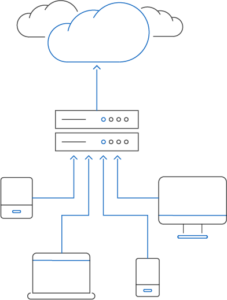
For the past few years I have been searching, learning and implementing different techniques to integrate DevOps practices with VDI. Most VDI solutions are using legacy solutions that require manual configurations, repetitive steps and no DevOps strategies for automation. The architects and engineers that notice this trend are creating their own orchestration around the costly vendor solutions. In my searching I found a few companies and repos that are providing containerized "desktop" solutions with graphical interfaces so that users can remote/console in and interact inside the container as they are accustomed to with a VDI or RDP. I found Kasm Technologies and, after reading their articles and configuring my POC, it became my personal favorite because it matched the vision and innovation I had in mind. A containerized desktop infrastructure (CDI) follows DevOps practices at its core with Docker and CI/CD Pipelines.
Quick Intro to the article
From an architect's perspective I will explain current challenges with VDI solutions and how a CDI is helping me offer cutting edge and effective solutions that are up to date with current DevOps strategies and automation in mind.
I am making the comparison by using the solution from Kasm Technologies (https://kasmweb.com/) since the solution changes how VDI in deployed by combining DevOps practices like Infrastructure as Code and Docker containers to solve challenges around cost , IT overhead and simplicity for end users.
In my experience, and confirmed in previous VDILIKEAPRO surveys, most VDI Teams have the following challenges and legacy patterns.
- Gold Image Management
- Applications are installed manually
- Most configs are applied manually
- OS Updates are lengthy and break software
- Errors by missing steps in configs from tech
- Resource Utilization and Cost
- Undesirable user experience
I am going to explain each challenge and how a CDI solves the challenges in the next pages.